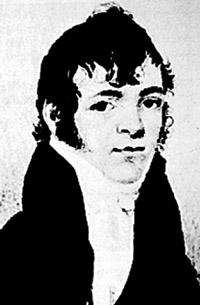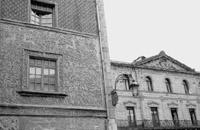Juan José Elhuyar spy
Elhuyar Fundazioa

Previously, the brothers Fausto and Juan José Elhuyar and the Royal Seminary of Bergara published several works in the magazine Elhuyar (see, among others, number 3 of 1983 and Elhuyar. Although November 1992, number 65, and December of the same year number 66, the Real Sociedad Bascongada de Amigos del País has recently published an interesting book that we want to communicate, especially because it has data of interest about Juan José Elhuyar.
The authors of the book are Inés Pellón González and Pascual Román Polo and is entitled: La Bascongada and the Ministry of the Navy. Espionage, Science and Technology in Bergara (1777-1783). He basically publishes the exchange of letters between the Count of Peñaflorida and the Marquis of Narros with the Secretary of the Spanish Navy.
In 1774, the Secretary of the Spanish Navy, D. Pedro González de Castejón, was mentored and was concerned that the best cannons of the warships were held in the Carrón de Scotland and brought worse in the factories of Liérganes and La Cavada de Cantabria. González de Castejón sent to Bilbao José Domingo Mazarredo at the beginning of 1777 a secret letter to Carrón de Scotland to send two spies and learn the techniques of cannon manufacturing.
Mazarredo came into contact with the Count of Peñaflorida and the Marquis of Narros in May or June 1777, and since then Peñaflorida (Xabier María Munibe) and Narros maintained an intense postal exchange with González de Castejón, Minister of the Navy.

Gipuzkoa’s two “stables” chose Ignacio Montalbo and Juan José Elhuyar for espionage in Navarre. Juan José Elhuyar was then studying in Paris and came to Bergara. (His brother Fausto Fermin was also studying in Paris, and after a deal with Peñaflorida and Narros he abandoned medical studies and carried out mineralogy studies and then became professor at the Royal Bergara Seminary).
However, in February 1778 the two spies (Inazio Montalbo and J. J. Elhuyar) were willing to work in Bergara. Juan José Elhuyar was given two letters with the orders: one confidential and one visible. The secret or secret had thirteen articles and the manifesto had eight.
The thirteen confidential orders are summarized below:
- I would remember the oath to always keep the true goal of the journey in secret.
- The sooner I went to Saxony to study Metallurgy and Casting.
- In Paris he met with the Basques Juan Bautista Porcel, Antonio María Munibe and Xabier Egia, whom he showed an explicit letter (not confidential).
- With the shortest time possible in Paris, he compiled interesting news and books to fulfill his goal.
- I would remove copies and abstracts from these books.
- He travelled directly to Saxony from Paris and, after being with the Spanish Minister of Dresden, travelled to Freiberg to study at his Institute.
- In Freiberg he studied metallurgy and art of melting iron. He would always try to be a gunner and cannon foundry.
- The study of German factories and the priority of iron cannons.
- He then moved to the Stakelberg of Sweden to study his cannon factory.
- He tried to go from Sweden to the Carron of Scotland and there he spoke of the Germans not to suspect.
- When he travelled to Scotland he had a relationship with a trusted person from Paris. I would write the German letters saying common things, but from time to time I would introduce phrases in Basque and collecting them would really know what they wanted to express.
- They would pay him the expenses through Paris.
- When he was willing to return to Spain, he would notify the Paris correspondent.
Each spy began his work. Inazio Montalbo was in the Carron of Scotland. Juan José Elhuyar, after studying in several European cities, arrived in Sweden, but from there he did not arrive in Scotland. He returned to Bergara (apparently because economic aid was suspended from the secretary of the Navy) and in 1782, together with Brother Fausto Fermin, they isolated for the first time in the laboratory of the palace of Zabala the chemical element called wolframio.





